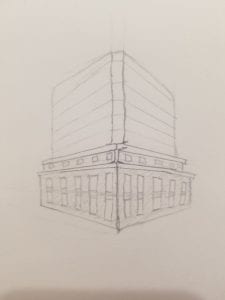The time I spent in Santiago was a very valuable and unforgettable experience. On this trip, I was exposed to so many different types of architecture and learned so much about the culture and history of Chile. The visit to the Museum of Memory was an especially eye-opening experience for me and really helped me to better understand the history of this area and the pain that was caused by the coup. Doing things like riding the metro and walking through pedestrian streets and Plaza de Armas also helped me to gain a better understanding of daily life in Chile.
One of the most interesting things for me on this trip was seeing how much the Chilean lifestyle differed from that of America. The laid-back style of service and small size of restaurants and stores contrasts the fast-paced, big-business culture of America. It was also interesting to me that most people, while not overly-friendly, were not outwardly rude or annoyed and no one seemed to be in a rush, like we often see in America. Even though most of us spoke another language, most people we interacted with were friendly and patient with us, and didn’t become easily frustrated or annoyed.
Overall, I am really going to miss Santiago and all of its special characteristics, like the dogs wandering around everywhere and the delicious foods, like empanadas and huesillo. I’ve gained so much from this trip, including a greater knowledge of architecture, culture and the Spanish language, and I’m glad that my first trip to South America was this one.
















 ( US INVOLVEMENT IN CHILEAN ATTACKS HELD IN THE MUSEUM)
( US INVOLVEMENT IN CHILEAN ATTACKS HELD IN THE MUSEUM) 

















